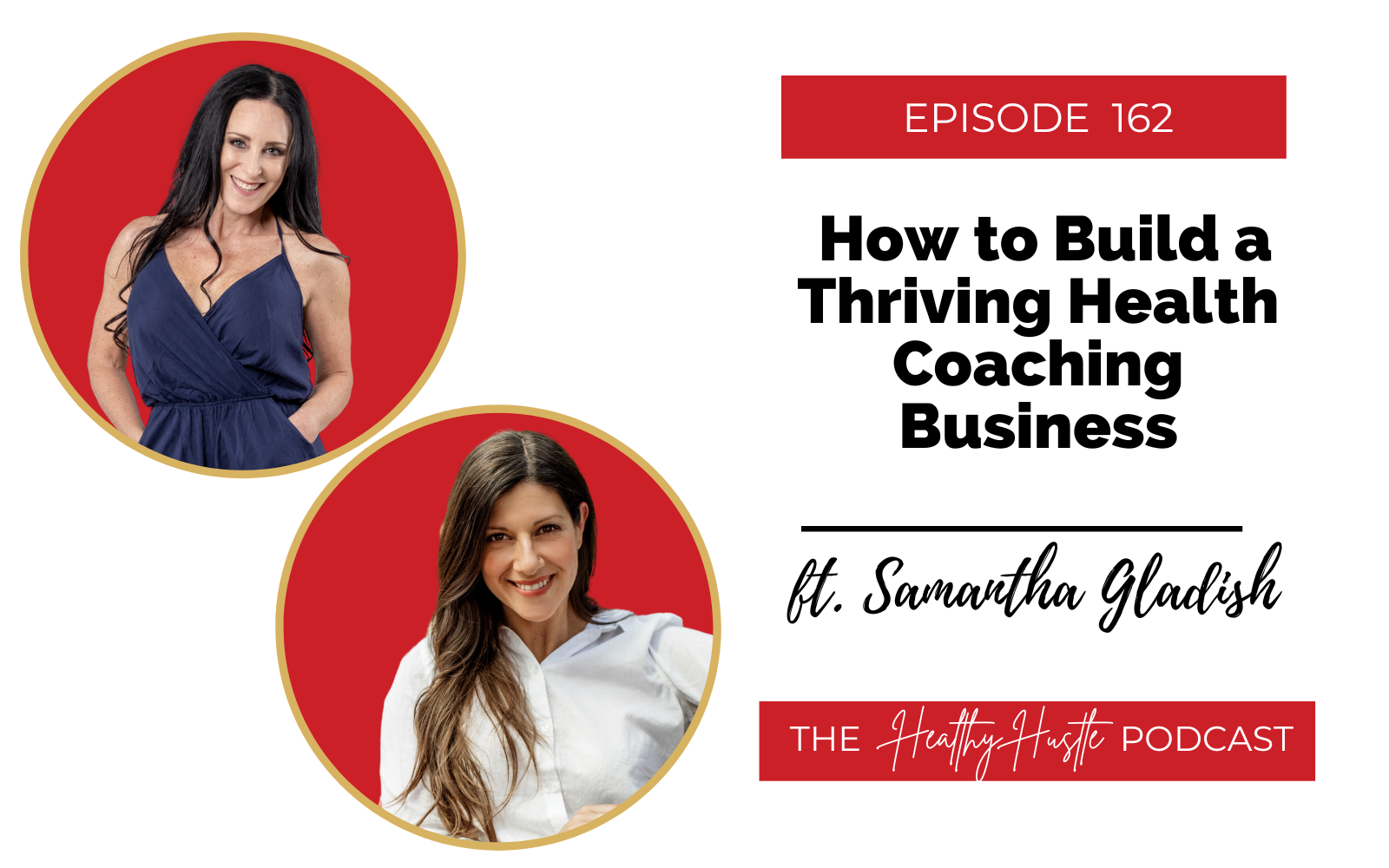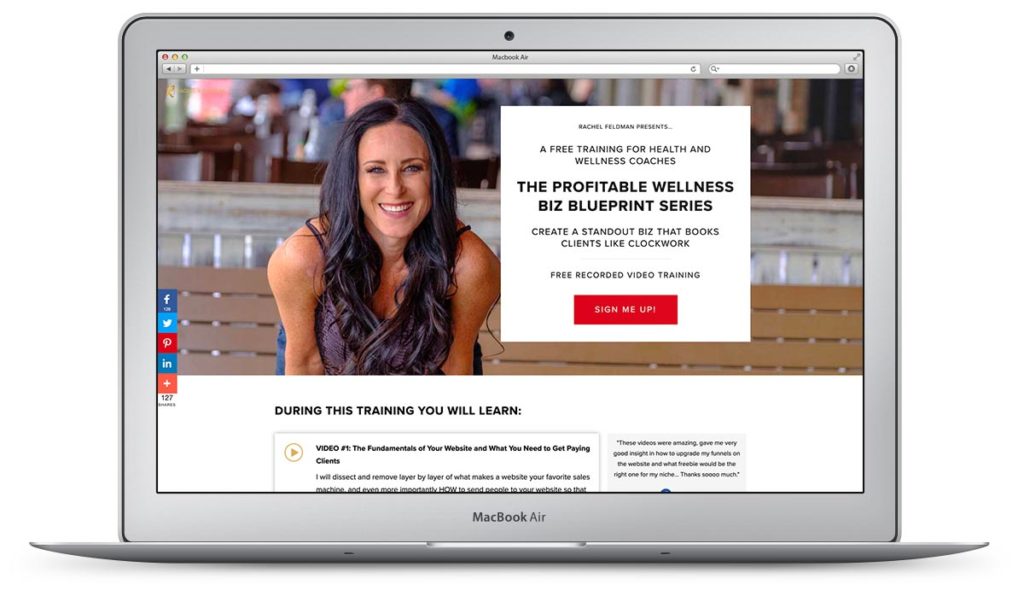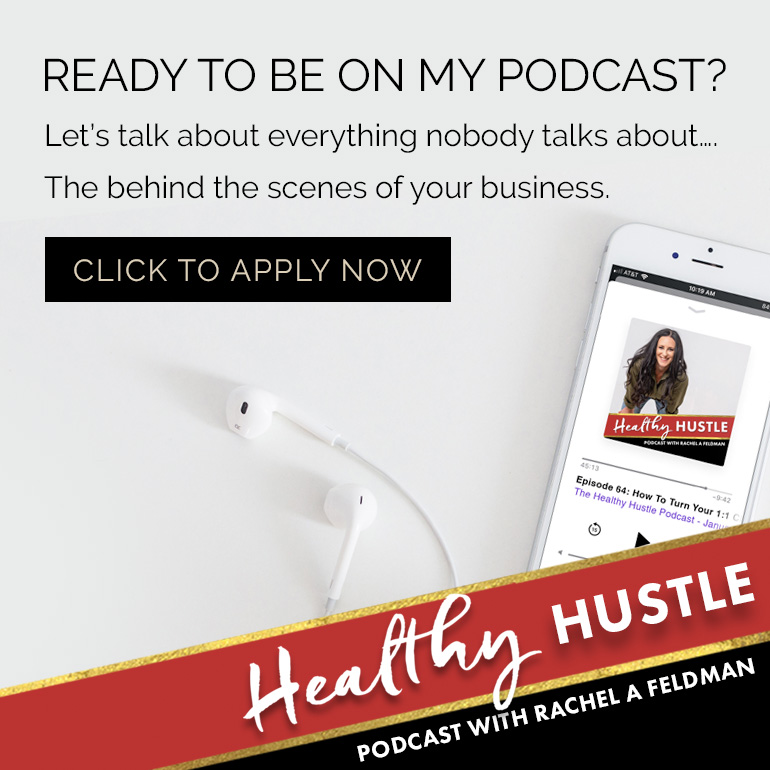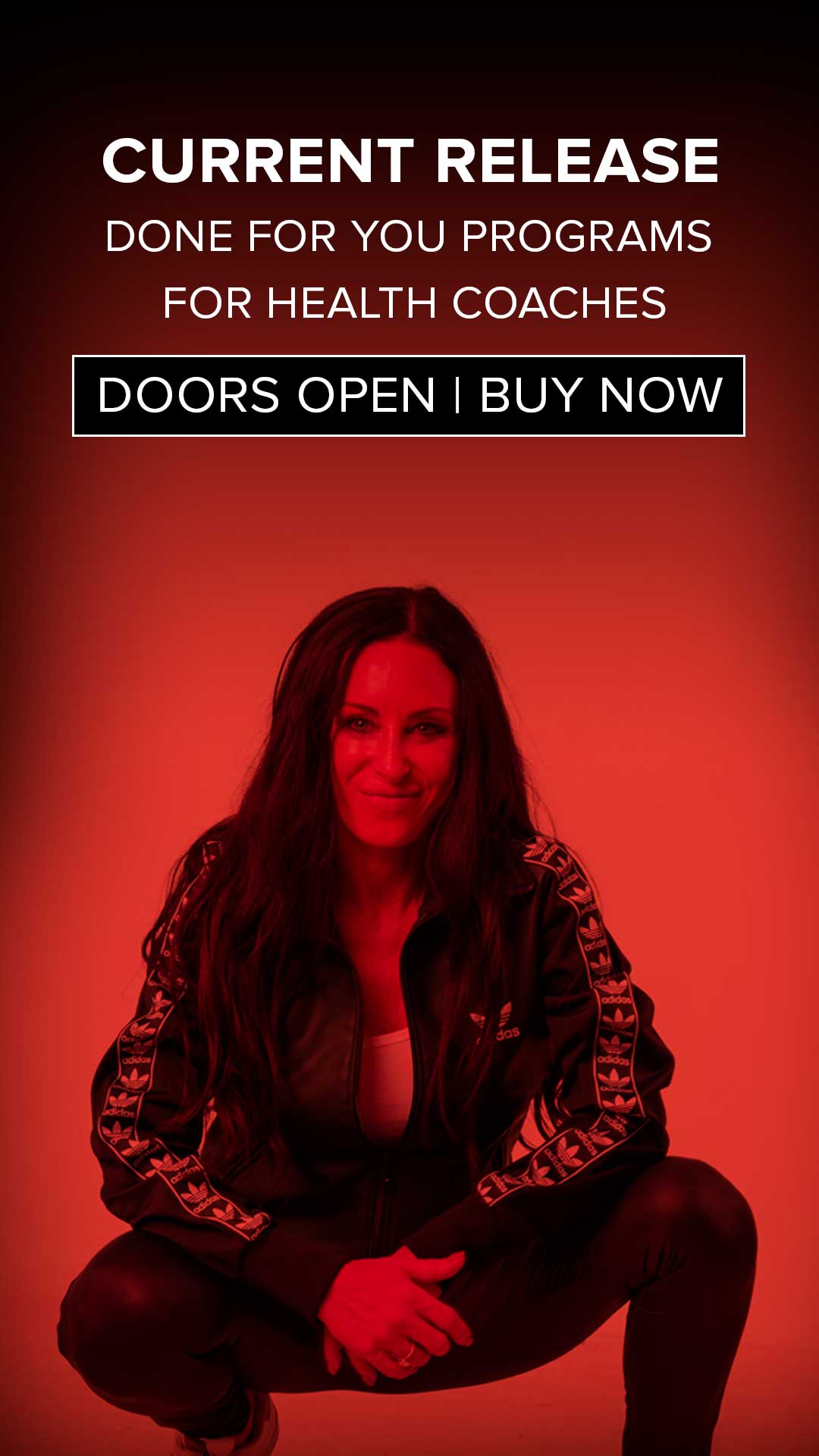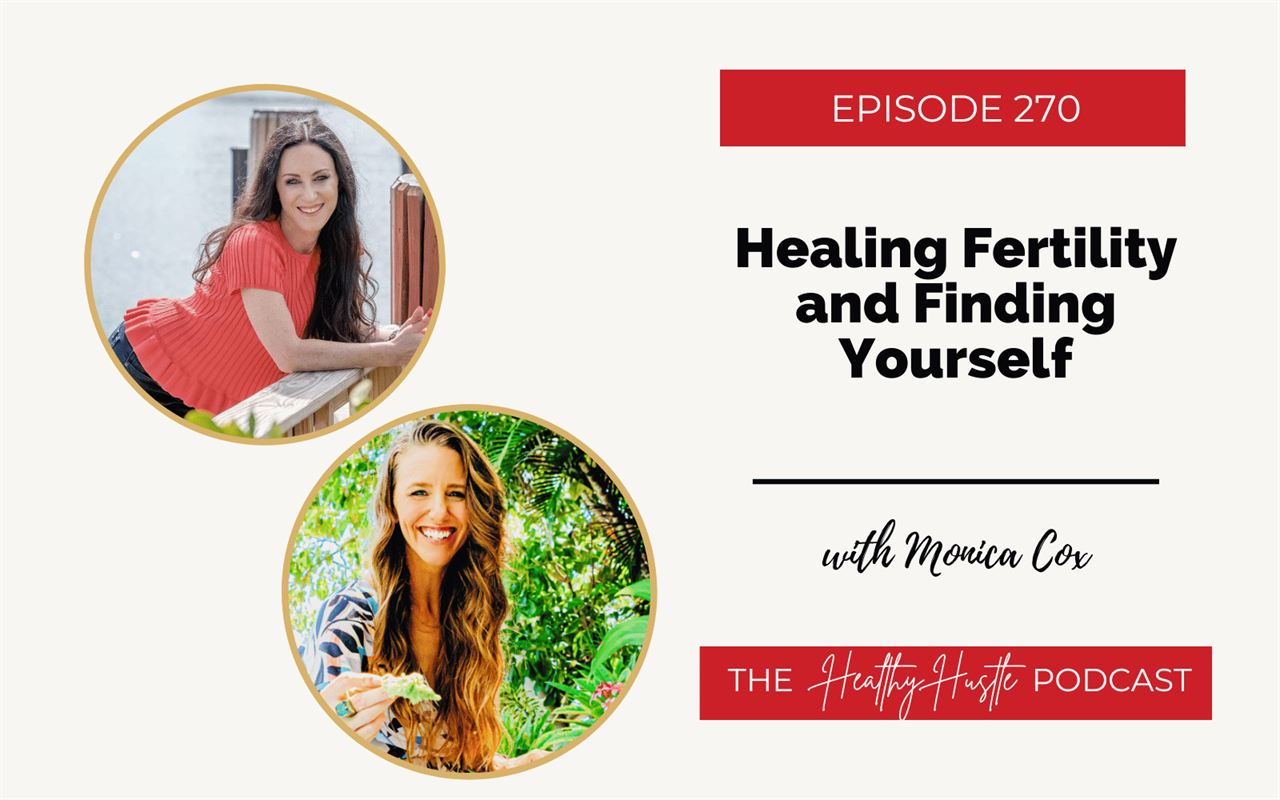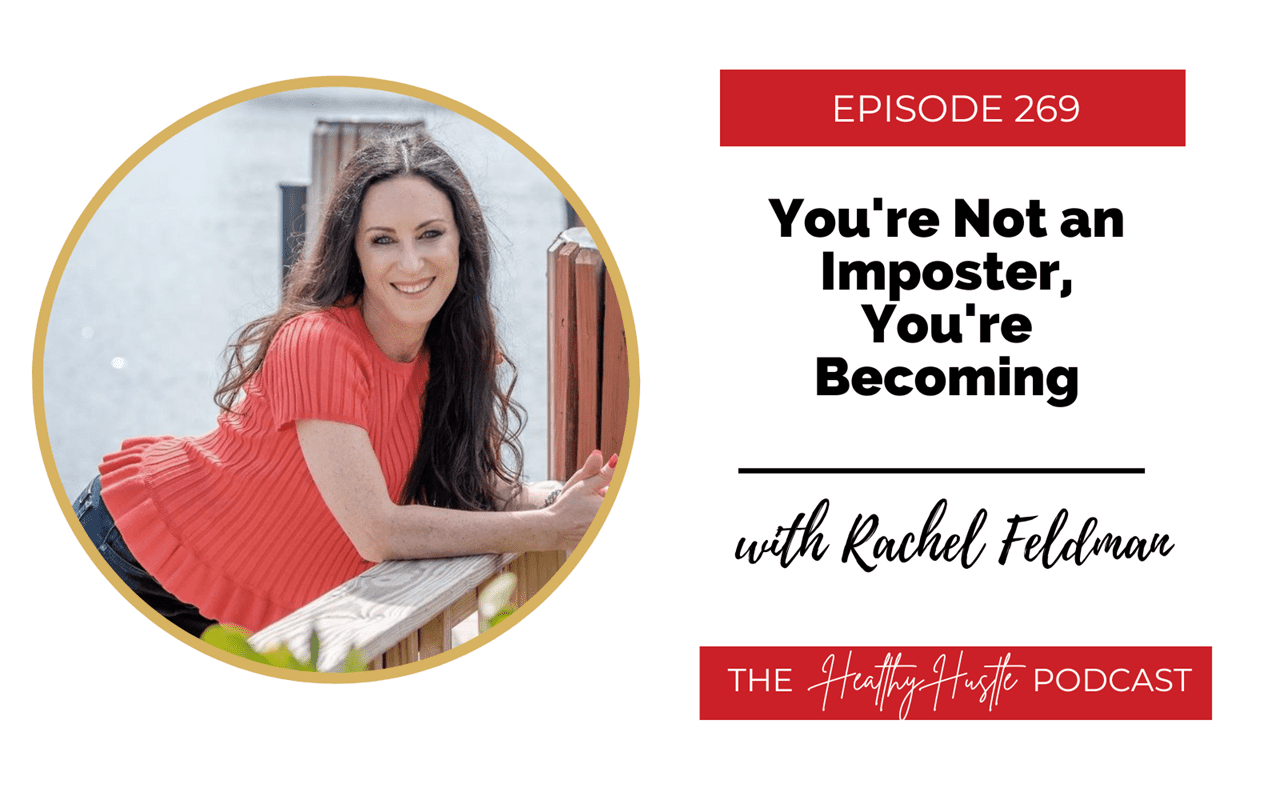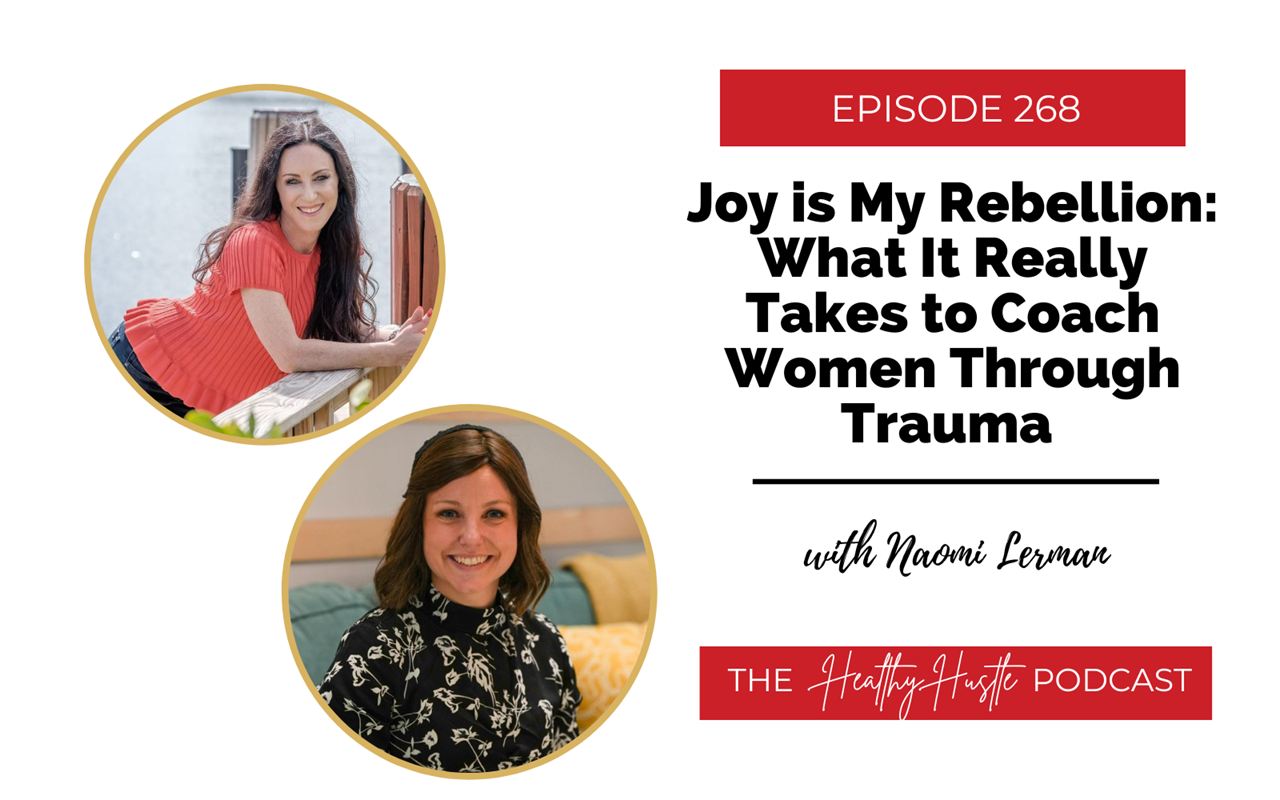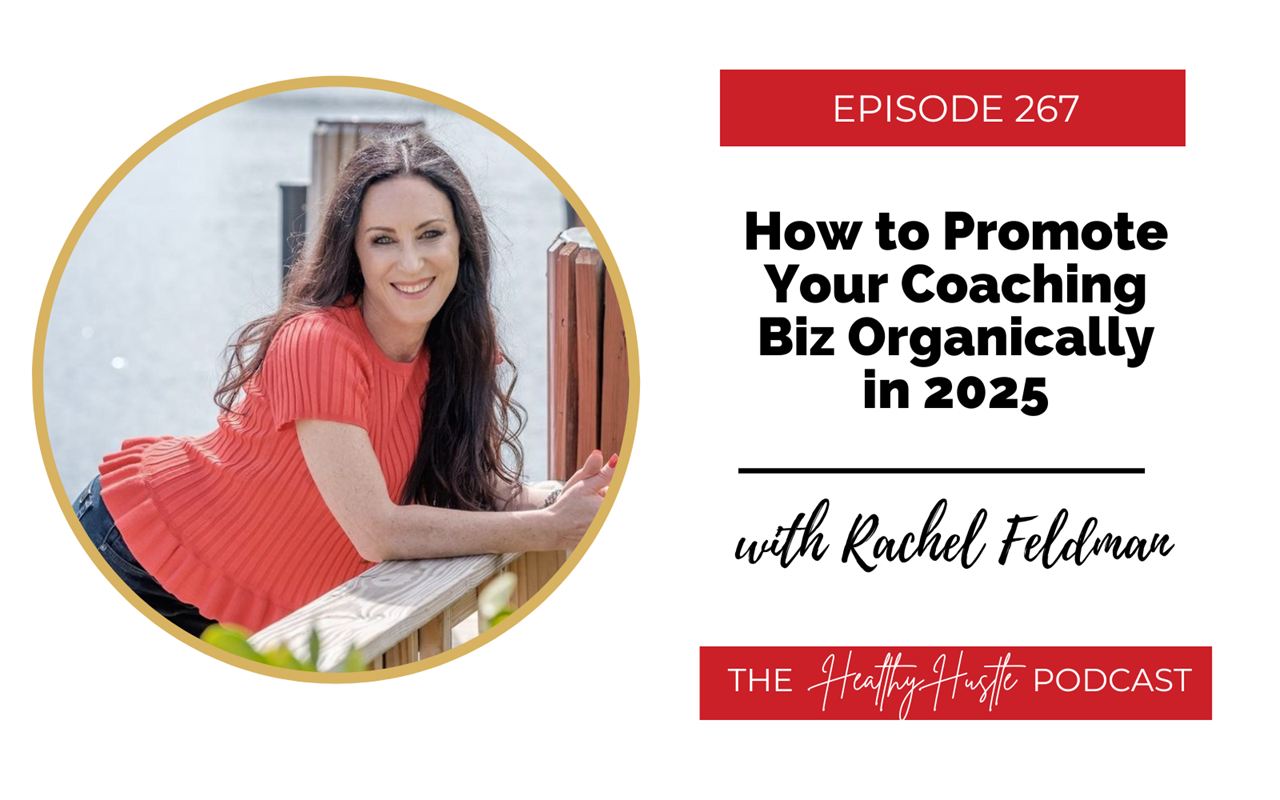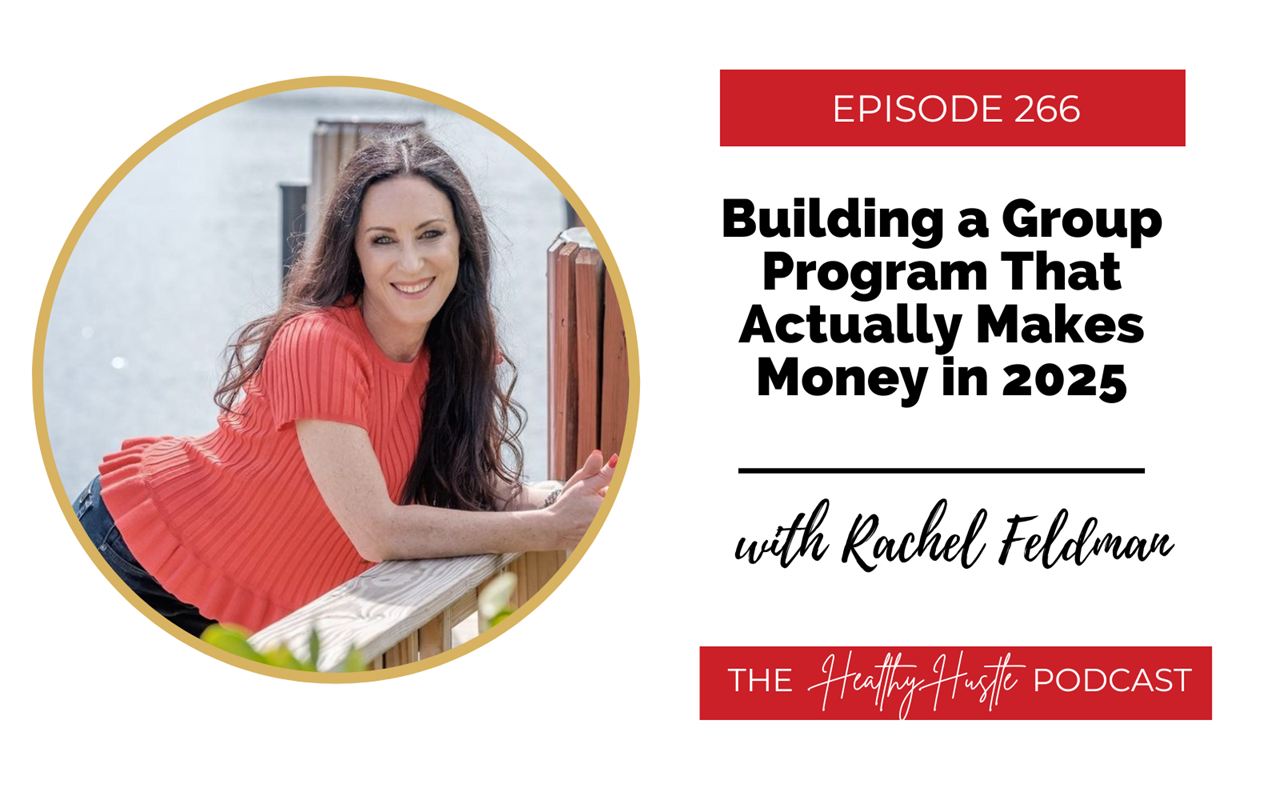What do health coaches need to do to actually change the lives of their clients? Build strong business foundations! A strong foundation is what will set your health coaching business up for sustainable success! Things like niching down, building email lists, hosting webinars, understanding the stages your audience moves through, and promoting organic (and paid!) traffic are key elements to building a business that allows you to help your clients improve their health!
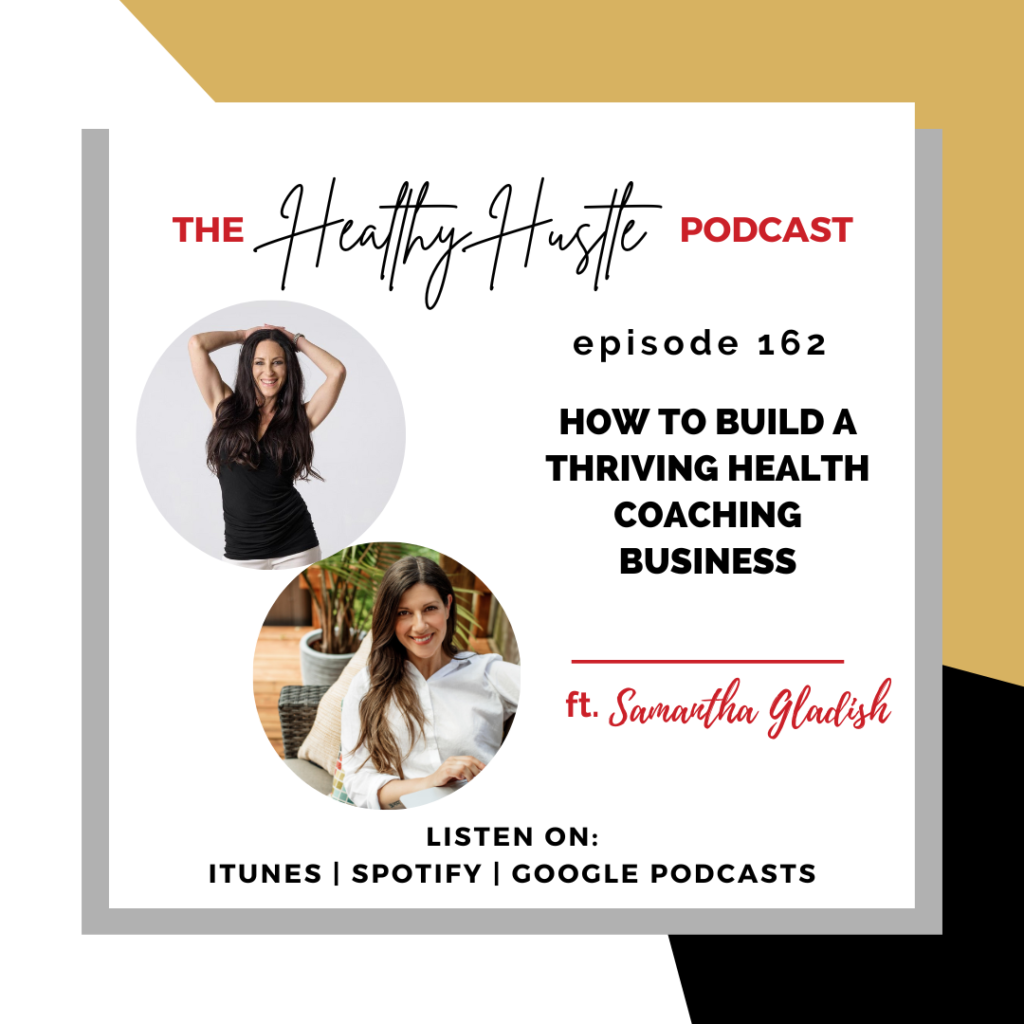
Luckily today’s guest has a plethora of information and experience on this exact topic. I am talking to the amazing Sam Gladish, a No BS Business Mentor, Lead Gen & Sales Expert, and Lover of All Things Online Marketing (and Food!). Samantha is the host of The Wellness Witch podcast and CEO of Holistic Wellness, an online business that helps women optimize their health and hormones.
Sam not only runs a thriving wellness business, but she also supports health and wellness coaches in her mentorship program and in this episode. She’s on the Healthy Hustle Podcast to share the exact steps that she took to build her six-figure wellness coaching practice. Plus, Sam is explaining why niching down and list building are so important, how to adjust your mindset around confidence to start your business, and the surprising lessons you can learn when you undercharge your services as a beginner. And so much more!
Connect with Samantha:
Website: https://holisticwellness.ca/
Instagram: @holisticwellnesswitch
YouTube: Samantha Gladish
Facebook: Holistic Wellness Foodie
Rachel: Hey guys, I’m extremely excited for this episode because I’ve asked my good friend Samantha, also known as Sam, to come and be a guest. She is that all-around woman that you need in your back pocket. She not only runs a thriving wellness business, but she also supports health and wellness coaches in her mentorship program.
In this episode, we are diving into the exact steps that Sam took to build her six-figure wellness coaching practice. Sam, can you introduce yourself to everyone?
Sam: Absolutely. Well, thanks so much for having me here. We were talking before we started recording that we’ve known each other for so many years, like eight, because I started in the online space about eight years ago and learned from you and your done for you programs and all of that.
So we’ve connected online for a long time. This is the first time we’re on video truly connecting and meeting face-to-face. I can’t believe that that amount of time has gone by. So I’m so thankful to be here and connect with you and your audience.
For those of you who aren’t familiar with me, my name is Samantha Gladish. I am an online hormone nutritionist. So we specialize. And I say we because I have a team of coaches and amazing people behind the scenes that specifically focus on women’s health and hormones. And then on the flip side, I am a business coach and mentor. So I work with practitioners inside our mentorship program. I wear many hats, as I’m sure you do in your business, and can dive into all of those.
Steps To Take When You’re A New Coach In The Online Business Space
Rachel: Well, I think we could go in so many different directions. We could talk marketing and list building and all of that. But I really think the juicy details are for the coach who’s either brand new, or they’ve been doing this and they’re not making money. What is that missing ingredient? I would love to hear some of the steps that you took when you came into this online space.
Sam: Absolutely. So just to bring it back a little bit, I could definitely relate to so many people with spinning your wheels and feeling like you’re not getting any traction. I totally get that. I spent many years doing that. I went from job to job to job and got fired twice. I basically had $4,000 in my bank account, and had to really bank on myself. And I knew I didn’t want to be in these jobs working for somebody else.
I had this massive light bulb moment go off when I was working one of my corporate jobs and I wanted to go away with my now husband who was my boyfriend at the time, he was surprising me with a trip to New York for my birthday. And I had to lie to my boss about taking that time off and asking for that time off. It felt so shitty to have to lie. All to get this permission that I could take four days off. That was a huge lightbulb for me that I was like something really needs to shift here.
So I started to dive into learning online marketing. I started actually just going to different events and business events and just planting my feet in that world and starting to understand what it means to actually market myself because I realized I was spending so much time, energy and money, investing in all these nutrition courses and getting all these fancy initials after my name thinking that that was going to be the thing to grow my business.
But what I was actually missing was the marketing piece, and learning how to put myself out there and sell and build an online business and build an email list and do lead generation. I’ve now invested well over $150,000 in working with coaches and going through programs and all of that. I had to really put my ass on the line, essentially, I just show up and bank on myself. There was no plan B, and I fully committed to this process and learned that you don’t know what you don’t know. So I just had to get really honest with myself about learning these pieces so that I can grow and build this business that I truly desired.
Why You Learn By Doing & Failing
Rachel: Well, I love that you’re saying that because it’s something that I think more coaches need to do. You need to come in and you need to learn it. As part of that learning is by doing, making a mistake, failing, and then figuring out what was actually the best process for this, because that didn’t really work.
Sam: Absolutely, there were so many failures, and I don’t even see them as failures. It’s all feedback. Especially in the coaching space right now, there’s a lot of misleading information around constantly growing and constantly scaling. Every year more and more people are burning out. We are mentally exhausted, there is some serious cognitive fatigue that’s going on right now.
I’m all for the growth. I’m all for reaching new goals and revenue goals and all of that 100%. But we also have to recognize that there’s maintenance. We have to know that we can maintain where we are, in order to actually get to that next level. A lot of us are skipping that. We just want to keep going and going, more and more. When is it ever enough? The chasing and having more?
Rachel: It’s so hard to stop when you’re building. It feels so overwhelming. There’s all these different moving pieces. I have to build my list. I have to have visibility, I have to be the face of my business. I have to do this all while I’m feeling a lack of confidence.
Sam: Of course, it is such a mindfuck. Let’s face it. It’s interesting, too. You have a story similar –there was not a plan B. And when you’re in those kinds of situations, you do have to make it work. But you can also transition from a 9-5, you don’t have to go all out.
The Mindset & Confidence Needed To Start A Business
Rachel: What was that initial piece of mindset and confidence that you needed to embrace to be able to start your business?
Sam: There’s multiple things. So number one, the consistency of just recognizing that I have to show up every day, sharing content, creating content, being visible, connecting with people, and knowing that it’s not going to be this immediate payoff, that I’m really here because I want to build something long term, this is going to be a legacy of mine.
This isn’t just giving myself a year and if this doesn’t work out, well, I guess on to the next thing. This is the forever thing for me. I’m very clear on that. So it’s really about recognizing and getting into the headspace that I’m building this momentum. And that takes time. I have to build community, I have to build connection, and I have to be visible and I have to be consistent. And it’s in doing that. That’s where the confidence comes.
We have this idea where we sit back and overthink everything and overanalyze everything. We think if we just think through all the things, that’s where the confidence is gonna come or we’re gonna find it. It doesn’t work that way and we fall into the worst burnout because we are doing that. We’re just waiting for that day to show up.
How She Started Her Business
Rachel: When you started your online business, did you know your niche clearly? What were your first lead magnets? How did you start building?
Sam: Great question. So it was a bit messy. I started my business not really having exact clarity on my niche. I just knew I needed to do something I was procrastinating for so long. So I knew I wanted to work with women that I knew. But specifically, in what capacity? I wasn’t super clear.
So at first it was a bit generalized, just kind of helping women with health. And so I had launched my very first lead magnet, which was a 10 day detox that I had written, and just something I had done in my own life and quickly put that together. So I launched that and put that out there into the world. Sure enough, many years later, we still use that lead magnet because it converts very, very well.
Rachel: Wow. It’s such a great value. Your high value for a freebie, especially if you’re leading them into a longer program.
Sam: Yes, absolutely. So that 10 Day Detox was just for women and they loved it. So that was what initially helped me to build my email list. From there, I got a handful of clients, some of those weren’t just from my email list, they were referrals and whatnot.
The Process Of Niching Down
But I do remember those first few clients because it was so general, somebody coming to you just saying oh, I want to get healthy, it was hard. It’s so hard to work with somebody who wants to get healthy. Because there’s no real end goal, right? Sure there were some symptoms and things we’re looking to address. But as a practitioner, it was really hard to support people in that process.
So as I started to work with women, and just work on general health, that’s when I started to realize this is not fully landing for me, as a practitioner. I feel like I don’t have a real methodology that I’m bringing people through.
As I started to learn more about honing in on a signature program, and creating more of a system for clients, then I really started to sit back and think about, well, what was my own journey and experience? What do I feel really confident talking about? Well, I had my own issues with the birth control pill and my period, and my cycles. So I feel really excited to support women in that same area. So that’s when I started to narrow in and niche down a little bit. I was calling myself the period fixer-upper.
And that’s really what brought me so much more traction. Because when you position yourself as an expert, and you really narrow down, you bring yourself more of the right clients and leads. So then it made more sense working with these women, taking them through more of a system to support their hormones and their cycle and get them understanding their cycle and their hormones and coming off the pill and a protocol for that.
And then that led to women coming to me with PCOS which started to expand to PCOS and thyroid issues. And there were always these hormonal imbalances with an underlying weight gain issue. So then I expanded into doing weight loss and just started to naturally progress as my community was growing.
As those women were asking for support and getting the data for my community, that’s so important. And listening to what women really wanted. It helps me to really focus on those next few steps and what I want it to grow. That makes sense.
How She Started Building Her List
Rachel: It makes complete sense. I love how it happened organically. But it also happened because you were showing up and doing that market research and those clients coming to you and seeing what people were coming to with the different issues. Absolutely started list building. Did you start a Facebook group? Where was your primary source?
Sam: So at this time, there was no Instagram, or TikTok, but there was Facebook and Twitter. I was using Twitter. But that wasn’t really a lead-generating platform for me. So I did have a Facebook group. And I was just posting such random information in there. I really was, it was so random and all over the place.
But I did have a group where I was able to bring a community together and post in there and share content. So I got some clients from there, yes. But the majority of it was from my email list. From there, as you start getting more clients, you start to build this amazing referral network. So I was getting a ton of referrals. And that led to me having to have a waitlist in place. And then when you see that you are really at this capacity, that’s when it’s time to really reassess in terms of charging more and raising your rates. I definitely had Facebook and then at some point, Instagram came along.
Rachel: So to get to that six-figure mark, I’m assuming that you charged according to what you felt your signature program was worth because for you to be able to make that, I know I struggled. I have complete money issues. I still work on them. And I was undercharging. I think I was charging $197 a month.
Sam: Well, that’s more than what I charged at first because I remember bringing on a client for three months and I think I charged them like $250
The Value She Learned In Undercharging Her Services At The Beginning
Rachel: Oh my God. How fast did that turn around?
Sam: Very quickly, and just a note on that, but the pricing and selling and all of that, I think there’s so much value in undercharging, because it allows you to truly recognize and see the time and the energy and the output that really goes into working with a client.
So it’s easy for me as somebody’s business coach to say, listen, you should go out there and be charging $2,500 for this. But for somebody who’s brand new, number one, that’s gonna feel super uncomfortable when they don’t have the experience under their belt. That’s easy for me to say that and throw them into the fire to do that. But I actually really want them to go through the process of undercharging. Because that’s where you’re going to start to see the value of what it is you’re really doing and the value of your time.
This isn’t just about getting on a call with somebody all the time and the hours and the effort that goes in behind the scenes. Speaking of confidence and knowing your worth, although you can never charge what you’re worth, because it’s beyond the moon and the stars, right? So the undercharging is really going to allow you to recognize the value that you are really offering. And that’s what’s going to allow you to build your confidence, confidence in yourself as a coach in your programs and your offerings to then be like, Wow, this is worth so much more. And then you start to work your way up.
So that’s really what happened to me. I realized, oh my God, this is crazy. I’m never going to have time freedom or flexibility or hit numbers that I really want to, or be stressed out over. This was just so much time and energy.
So those prices went up. As I started to streamline more of a package in terms of not just working with people one off, here’s a one hour call, booking a 30 minute follow up. It’s really hard to scale a business that way. And we know we can’t solve somebody’s health issues in a one hour call. So as I started to create more structure with a three month minimum commitment. I can’t remember exactly the pricing. But I do know, at one point I was charging about $1500 for a three month program, which over time went up to $3000.
Rachel: I think email list building is really important. I hear you can build on social, you can just go on Instagram. I’m always like, that did not work for me. I had a plethora of freebies that I used to really test lead magnets that people were interested in.
Why Webinars Are A Great Way To Connect With People
As you started to add more programs, do you have a specific freebie that addresses each of those pain points? What would you suggest for that coach who’s like, Okay, I have my signature program, but I am not getting the people into my list that I really need to get at.
Sam: So a framework that has always worked really well for me was webinars. Webinars can be used as a lead magnet, they’re great because they help you to build your email list. But at the end of that webinar, you have the opportunity to pitch your programs and sell. So webinars were really great for me. We obviously teach our students an entire framework to really launch their coaching programs. Those are great because you’re live on video, people get to see you and hear you and connect with you in such a powerful way. And that was really helpful for me. Webinars are just a great way to connect with people. Even just getting in front of the video, yes, you’re so much further ahead of somebody else. Nobody knows how to do it perfectly. In the beginning you have to just like you have to practice
Rachel: Totally. The amount of anxiety and overwhelm we see from our students. I’m like, Okay, it’s time for you to create your webinar. They procrastinate on it big time.
Sam: It’s just because they’re nervous, when it comes to webinars. I think what’s happening is coaches feel like they need to put everything into a webinar or they need to teach all of the things and that’s not what your webinar is about. There really is a system to it. But more than that, it’s about teaching in your zone of genius. So when you start to teach outside of that, that’s when you start to feel really uncomfortable because you feel like you have to know everything, but you actually don’t. Just focus on one main thing and teach about that. The thing that comes so easily to you.
What I always used to say to myself is I’m just here speaking to a girlfriend who really needs to hear the support and advice and get some education and just feel like somebody is actually hearing them and listening to them. So that’s how I think about it with sales calls, with webinars. It’s so easy to overthink these things. And it’s really easy to overthink them when you haven’t done them. So once you actually go through it, it’s a much easier process than you think. But you have to go through it.
Rachel: Yes, it’s like the fearful inner child who’s trying to protect you and don’t do this, you might mess up, let’s not get into an uncomfortable zone. Just put it to the side, have your workshop there. Go over those slides. Practice it before you do that webinar or a bunch of different times. Get prepped.
Sam: Absolutely. And a big thing with procrastination, because I see it all the time, especially with webinars, having to be live on any sort of video platform always freaks people out. But with procrastination, often we are avoiding things because it’s going to bring up certain feelings, like the inner child. So we will often avoid doing something like a webinar, because showing up means it’s going to trigger feelings of not being good enough, or not knowing enough. We end up not doing these things because of the emotion we’re trying to avoid. So if we can really just tap into that, and really recognize that that’s just your fear talking. It’s your ego talking.
We spend so much time in our heads, I’m always telling my students, get out of your head and get into your heart because you’re here to serve, and you’re here to show up. This is what you love to do. Let’s show that and share that with the world.
Rachel: It’s so true. When you lead with the heart, it’s just like the words can be put in your mouth. But when you’re trying to come up with something so strategically every time, you step too much into that masculine flow. Yes. And it just doesn’t work.
Sam: 100%, I can totally relate.
What Type Of lead Magnets Worked (& What Didn’t)
Rachel: So let’s talk about your lead magnets for a second. Did you like Facebook ads from the beginning? How have you built organically? What did you see that really worked for you?
Sam: It’s been a bit of both. So I’ve had multiple lead magnets, you were very helpful in that process too. With your done for you programs, they were great. Got many of them. I spent time revamping them, and making them my own. But man, they’re huge time savers.
So I had multiple lead magnets: meal plans, sugar, detoxes, PMS guides, 10 day detox, all sorts of things. So those were great. And then I would just share those organically on social media. But I definitely did run ads. I didn’t run ads to necessarily all of them. But the ones that were seen to get the most conversions and interest, then there was definitely money going behind those.
I did start pretty early with Facebook ads. At that time, the ad game was very different. I could run them myself, it was an easy platform to navigate. It was not very costly. I could literally spend like $30 a month. It was very different. So it was easy for me to just do that. I still run ads to this day but I also focus on a lot of organic as well. So it’s really the best of both.
The reason I focus on ads is because I do not want to be on social media all day long. Every day. I want this running for me in the back end so that I can actually take care of myself and enjoy my life, which is why I’ve built this business so I can have freedom and flexibility with my schedule.
So what’s really important to know when we are on social media and posting all the time and the visibility and showing up and just being consistent with that. If you are seeing people online saying to you that you can sell in your DMS and you don’t need an email list, you can just sell through Instagram. Here’s the thing: there is truth to that 100%, if that is the business model that you want, by all means, you could go on social media and spend six to eight hours a day. Because if you ask these coaches and I know many of them, and they are fully transparent with me, they are literally spending six to eight hours a day on social media, in their direct messages, all the strategy, three to four videos a day, it is non stop, and I personally don’t want that business model. So that’s why I run ads.
Rachel: I love that you’re talking about that balance with what you so desire in your business and your life, because I think, in the last three years, I don’t know if it was just COVID that pushed everyone over the edge. But I feel like everyone after that is like I’m burned out. You don’t want to live the same life. A lot of people took that time to reevaluate what was important in that whole social media and hustle attitude of life which has definitely gone away.
Where To Promote Organic Traffic To Get More Clients
Rachel: Totally 100%. Where are your favorite places to promote organic traffic?
Sam: So I am on Instagram, I love it there because I’m a very visual person. So the reason I got on Instagram was because I’m a foodie. I love to cook and bake. Seeing other people’s food photos is what drew me to the platform. So that’s where I started. And that’s where I continue to put my energy, I focused on one platform and put all of my eggs in that one basket. And that’s why it took off for me. Now I’m spending a bit more time maybe trying to grow Tik Tok, but I’m not on there very often and not consistently.
I would say to anybody, when it comes to your social media platforms, pick one, and at the very most two. For me, it was my Facebook group and it was Instagram. I don’t really put much energy into my Facebook group now. It really is just Instagram. And then my email list.
Rachel: Could you say you have an incoming flux of health clients? Where are they finding you?
Sam: My podcast. I started my podcast in 2018. So a lot of people find me through there, which they still do. I don’t do personal one to one coaching anymore. I haven’t for over two years now. I do have coaches that people can work with one to one, I do have a program that I show up in. But that essentially is the only way that you could work with me inside the Naturally Nourished program that I run. Instagram and my podcast are the two biggest referral platforms.
How To Know When Is The Right Time To Add Other Offerings
Rachel: We talked about that one signature program, but I see you have other offerings. When did you know that it was the right time to add another offerings?
Sam: So I had a coaching program, that was a bit messy at first and not super niche down. So I had that. But I was actually launching many programs. Looking back, I was just doing that, because that’s what I thought I needed to do. I felt like I always needed to have something new and out there. And I did too much of that. I ended up taking my focus away from really focusing on growing one thing.
So I finally transitioned and focused on one thing. And that’s what really helped me to scale beyond six figures and into multiple six figures was just really focusing on that coaching program and scaling that. And then because I had this real system in place, and consistent clients and recurring income and all of that it allowed me that freedom and flexibility to start exploring other options to create other programs.
So it was really just about listening to my community. What is it that they’re asking me about? And also with my coaching clients? What are the things I’m constantly repeating and going over that I can take and turn into a smaller, lower barrier program to help others who perhaps aren’t ready to join me in a higher end coaching capacity?
The Biggest Challenges Her Clients Have & Building A Framework From That
Rachel: I love that. Can you tell me about your mentorship because I know so many coaches desire to have a framework. What are some of the biggest challenges that you find your students have?
Sam: One of the biggest things that I always hear from our students, when they’re curious about the mentorship and getting support is, I’ve been posting on social media, but I’m not getting any clients. That’s the thing I hear consistently. And then when I asked, do you have a sales system in place? Do you understand lead generation? Are you building an email list? They don’t have any of that.
So what I’m finding is people are actually skipping over these foundational steps in their business. And just going straight to social media, posting random content, telling people to reach out. And they’re getting crickets essentially. I have a new program. Message me to start now.
Rachel: Yes, absolutely. And it’s not to say that that will never work, or that can’t work for you.
And if you have visibility. I think, yes. The top people in the industry, they still do their marketing and their pre marketing. They don’t do everything on the core fundamentals of marketing, and building a list and nurturing your list.
Why It’s So Important To Build a Strong Foundation For Your Business
Sam: Yes, absolutely. So it’s so important to build a foundation, and people are skipping over that. So a lot of coaches don’t understand what it means to do lead generation and have a lead generating funnel and system that is built and automated and set up for you. They don’t understand how to put a sales process in place and really streamline that onboarding process with their clients, but also how they’re attracting those clients. They are really unclear about their messaging and who they’re speaking to. And there’s just no strategy behind what they’re doing.
So it basically feels like they’re throwing spaghetti at the wall and just pushing this boulder up a hill. I say this from experience, because I did it myself. I know how important it is to put those steps in place. Because that’s what’s actually going to leverage your time. So that when you have automated systems in place, you can actually now put your energy into visibility and into connecting and actually marketing yourself. When you know how to get those leads, how to clearly communicate to them and nurture them and actually put them through a sales process, your business totally becomes streamlined and it becomes this foundation for scalability.
A lot of people are skipping over it, because we’ve been brainwashed into this idea that social media is where it’s at, just post, you’re going to get clients so put all your energy there. And building a business is hard, and it takes time. And it takes that grit and that effort. Don’t skip the fundamentals. Don’t skip it. Because then it becomes even harder if you skip those fundamentals. You just keep spinning your wheels forever and ever and ever. Just go back to those fundamentals and get them in place.
So that’s really what we’re building with VIP students. The moment you’re unclear, go back to the basics. What do you want to be known for? What is my niche? Who is my ideal client avatar? Do I read different personas? What are their biggest struggles? What do they desire?
Rachel: The big issue is that I see a lot of coaches missing, is what’s the reason she’s gonna buy? That can be something that you really discussed today, in narrowing down and listening to the very things that your potential clients were asking you to have.
Sam: Absolutely it’s so important to listen, and we just get caught up in our head thinking, Oh, I’m going to do this thing. I’m going to create this. I’ll do this over here. I want you to create stuff that you’re excited about that you’re passionate about 100% But take that and combine it with what your community is saying what they’re asking for. Really take into account their problems and their issues and their pain points. What are the things that’s keeping them up at night? Mash those things together, that’s where you find the sweet spot. We said this earlier, speak from your heart.
Rachel: Totally. I hear so many coaches say well, I don’t know what to say. It’s like What did you want to say to the world when you first became a coach? Go back to that original what’s our why? What do we actually want to say unfiltered? Just say it.
Sam: Yeah there needs to be this sense of boldness in your approach. Because I think what happens is, we all know what we want to say, and and what we want to share, but we don’t, because we are just scared of being disliked and getting mean comments. Listen, you’re damned if you do, you’re damned if you don’t. It’s gonna go either way.
In all of these years being in my business, and being on social media and having these platforms, it’s actually very rare. The amount of times people come out and are super rude, it’s very rare. It definitely happens. But they’re welcome to leave camp. They’re not my people. It’s swiping delete, and on to the next. So I can’t let that stop me from doing the thing that I really want to do and serving the people that really need the help.
How To Communicate With Your Client By Understanding The Stages They’re At
Rachel: What would you say to the coach who is posting on social media and no one’s opting in? What are some of the things if we were to reverse engineer for that code?
Sam: There are things they need to think about immediately. So it’s really important to think about, number one, your niche. Who is your ideal client? Who were you actually speaking to? What are the problems that they are going through right now?
For example, I think of this one phenomenal gut health coach who has amazing content. I’ve looked at the content and that’s so good, but they’re not converting. When I think about that, I also always say, Does your ideal client know the words that you’re actually using where they lay still stuck in the symptoms?
Rachel: Totally. That’s important. You have to really understand the stages that your community and your followers are at, because you’re going to have a mix of people in your audience, people who really desire a change, and they desire something different for themselves. If you are constantly talking about the solution, but you haven’t actually explained to them about the problems that they’re going through, and really kind of taking them through this journey, so that this person can understand, that’s how you really convert people.
It’s a story that you’re telling. You have somebody that desires something different, but when you’re in that desire state, you’re actually not ready to make a purchase. That desire state is the state of just getting information. So it’s important for us as coaches that we need to spend time showing people what the problem is, and why they’re not getting the results that they want. And as we start to share that information and educate our audience about that, that’s what gets the interest piqued for them to be oh. It helps them to connect the dots.
Rachel: I feel like coaches don’t do that enough. I think one of the things that’s been coming up a lot is somebody will say, Well, my niche is hormones. So I’m not going to talk about any of these other things. It’s like, what are you talking about? There’s a plethora of things you can relate back to hormone health. I think that coaches get so focused on this one area that they failed to connect it. What are your sugar cravings and hormone health? What’s your sleep and hormone health? What’s your cell phone like? What’s your period like? Things that would be affecting this woman on a daily basis?
Sam: Totally. I think we get so caught up in our heads when we think about niching down that if you for example, say okay, well, if my niche is PMS, how am I supposed to constantly just keep posting stuff about PMS? There’s only so much I can say and it’s like, well think of it this way. You have your umbrella, which is PMS at the very top and then under the umbrella, what are all the topics that relate back to PMS that this person can know and that you can educate them about? Because it’s not just PMS and your period. It’s their nutrition, it’s stress, it’s sleep, it’s supplements, it’s understanding hormones, it’s their gut, it’s liver and related all back.
Rachel: It’s their green rolls.
Sam: Exactly. I always say to a coach, if you’re so stuck, Google Mind Body Green and see all the different articles that come up, everything that they’re talking about and relate it back to your niche.
Rachel: Absolutely. It’s a great idea, because it will give you so many ideas. If we think we’re going to run out of ideas, go there. And remember, we are the experts so we are constantly talking about this stuff over and over. It feels boring for us, it feels so repetitive. But your ideal client needs to hear it multiple times in multiple ways, in order for it to really land for them to finally be Okay, I need to take action on this. I need to hire this person.
Courses & Books That Helped Her Hone In Her Health Coaching Business
Rachel: Do you have books? Or did you take courses in marketing that really helped you to hone in on this area?
Sam: Oh, my God, so many courses. I think the first one was Marie Forleo is B School, I think I took that in 2015, or something. It’s a fantastic program, and I love all things Marie Forleo. But it also showed me very quickly how that wasn’t a learning style for me. I never completed the program, because I didn’t love being in a Facebook group with 3000 other students. I just felt really lost in the mix.
So I feel like most of the programs I enrolled in were just a numbers game. Again, I felt lost in the mix. That’s why I wanted to create something that really fix that gap, which I see in my industry. We are not a numbers game in our mentorship. It’s small group coaching. So we can give high level support. Our mentorship runs as well part mentorship and also part digital marketing agency so that we can actually take on the tech and the funnels and build out for our students.
Rachel: It’s huge, because you and I both, the tech is what takes us down and I feel you could have a coach that knows exactly where they need to go. But they can’t get there because they can’t get the tech off the ground.
Sam: Absolutely. So we build lead magnet funnels, webinar funnels and the entire sales system and process for all of our clients. So it’s amazing, it really gives them so much momentum. And then we teach them how to use the platforms. Our tech coaches are so fantastic. We cover copy and review their content creation, all of the things. So it’s really fantastic.
I love it because like my love language is being able to show up and coach and serve and connect with people. So being in a small group capacity allows me to build such beautiful relationships with our students who have even graduated two, three years ago, and they still message me and they still keep me up to date with things going on. That’s what I love the most and the fact that they trust me to still keep coming back and sharing and asking questions and wanting support. That means a lot.
Rachel: I love that. And that’s so important to have those smaller kind of coaching circles, because that’s where you actually get that transformation. Even self paced programs. I’m not the best at doing them. I need somebody who is holding me accountable. It lessens my anxiety and allows me to show up.
Sam: Absolutely. So our mentorship is a bit hybrid. We have our Member Area where you can do your self paced and learn about marketing, learn about social media, learn about webinars, it’s all in there for you, but come to the weekly classes so that we can actually coach you through it. There’s human connection and Q and A’s and hot seats. It’s not 3000 students. It’s like 20.
Rachel: So before we end up wrapping this up, is there one thing that you’re like, I wish I would have done this differently right in the beginning.
Sam: Oh, definitely niching down, for sure. And then also with list building. I feel like there would be moments where I would list build and then stop and then list build on stop. And that should have just been a consistent thing. I don’t want to say I should have, but looking back it definitely would have helped to just have that consistency with the list building for sure.
Where To Lead People From Your Webinars
Rachel: One more question, in the webinars that you did, because a lot of people get confused. Where did you lead them? Did you just lead people to discovery calls? What was the process for that?
Sam: So multiple things you can do with a webinar, you do not have to pitch or lead people to anywhere, you could just do a webinar because you want to connect with your audience and show up and serve them and give them an opportunity to see your coaching style and know a little bit more about you.
When people can see you hear your voice, see your mannerisms, they can build such a bigger connection with you. So that’s one way to do a webinar. Another way is to pitch your discovery calls at the end. So that was definitely something that I did, especially for higher end groups, one to one coaching or group coaching. It was if you want to learn more by booking a call and chatting with me. And so that was definitely one. And then there were other options of just leading them straight to a sales page to go by, or a link to checkout to go by. So there are tons of different ways that you can do it. And I think all are valuable and all work.
Rachel: I just had to ask you that last burning question that I use to end the episode. I love the takeaways that you gave, and really sharing from just such a place of soul-based messaging on what is essential for health coaches to do to actually be able to change lives. So before we go, can you tell everyone where to find you on Instagram? Where to find you on your site?
Sam: Absolutely. So if you’re interested on all things, nutrition and hormones, you can find me at holistic wellness, which over on Instagram, there’s also my podcasts, which is the Wellness Witch, and our website holistic wellness.ca So that’s all things nutrition and well being and then on the business and entrepreneur side, we do have our website, which is just semantic loutish.com And you can click there to learn about the mentorship. It’s all there. I do have a business Instagram, which doesn’t get all the attention. It’s a slow bill, but you can follow me there. Samantha_Gladish on Instagram if you want to see all my business musings.
Rachel: Awesome. Well, you have your work cut out for you to listen to the feedback and this episode today. But also to go follow this woman because she has a plethora of information. And I always say you have to follow people who have what you actually want. So definitely make sure that you guys do that.

